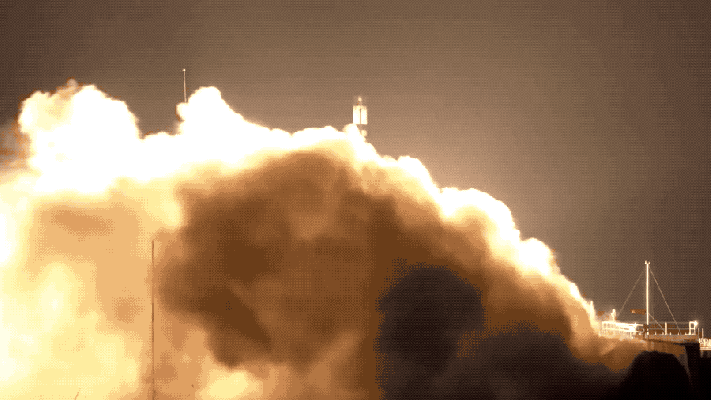
Rocket Lab launched its tenth Electron spacecraft on Friday morning, successfully delivering payloads for clients Spaceflight and Alba Orbital. The launch company also had an important secondary mission for this launch: testing the guidance, control and navigation systems of their first-stage rocket recovery system.
Rocket Lab announced earlier this year that it would be aiming to convert its Electron launch system into a partially reusable one, after initially designing and operating it as a one-time-use launcher and spacecraft. To that end, Rocket Lab CEO Peter Beck revealed how the company will look to effect a controlled re-entry for the Electron first-stage rocket booster, after which it’ll be caught mid-air by a helicopter as it descends at a speed slowed by an onboard parachute.
This morning’s launch provided a test for a key element of that system — the re-entry control and navigation equipment and software that helps the first-stage effect the crucial first part of recovery, by returning to Earth’s atmosphere after separating from the rest of the launch vehicle.
The first-stage re-entry seems to have gone according to plan, as Rocket Lab on Twitter termed it a “successful guided re-entry of stage 1.” In fact, Beck said that the Stage 1 recovery actually went “better than expected,” which indicates it outperformed whatever parameters the company had set to define success in this case — probably pretty broad, because the whole purpose of the re-entry in this instance was to test and gather data.
Rocket Lab’s approach differs from SpaceX’s first-stage recovery process, which the company demonstrated yet again during a launch earlier this week. Rocket Lab won’t be using propulsion to achieve either re-entry or landing, like SpaceX does, which will be more efficient and practical for a smaller launch vehicle. Instead, it’s turning the booster around in space using a controlled burn to orient it optimally for a re-entry that helps it shed enough of its speed to allow it to deploy its parachute and descend at a rate where it can be caught by the helicopter — a maneuver that’s actually relatively simple compared to a propulsive landing, despite its seeming complexity.
Depending on what happens with recovery of this booster, which Rocket Lab didn’t attempt to catch mid-air but which it is hoping to recover from the ocean, we should get an idea of next steps — including possibly when we’ll see an attempt to not just recover a rocket, but also refurbish and reuse it.
Science - Latest - Google News
December 06, 2019 at 07:46PM
https://ift.tt/2sThx59
Rocket Lab launches 10th Electron mission with successful rocket booster re-entry - TechCrunch
Science - Latest - Google News
https://ift.tt/2Kb7H4e
Shoes Man Tutorial
Pos News Update
Meme Update
Korean Entertainment News
Japan News Update
Bagikan Berita Ini














0 Response to "Rocket Lab launches 10th Electron mission with successful rocket booster re-entry - TechCrunch"
Post a Comment